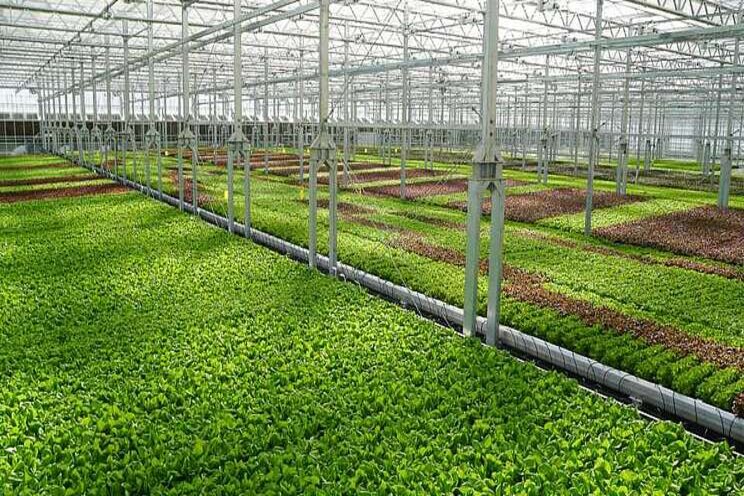8 trends shaping the greenhouse structures industry
Added on 11 June 2020

We checked in with a few experts in this category and asked them about the biggest needs their grower customers have today, as well as which trends will likely drive the structures industry in the coming years. Here's what they had to say.
1. Education is Critical
Many suppliers are looking for ways to constantly provide growers with a stream of information on structure maintenance, enhancements, and more. This often comes in the form of technical articles written by in-house experts.
"Education is especially important on new products and emerging markets," says Joe Bartel, Regional Account Manager with Stuppy Greenhouse. "Growers may be producing annuals now, but what if they want to switch in the future to hydroponic vegetables or hemp production?"
2. High-Value Crops Driving Innovation
New technology seems to follow high-value crops, Bartel says.
"We have seen a lot of new technology introduced in both hydroponics and hemp production, especially in the grow equipment and environmental control aspects such as controllers, lighting, ventilation equipment, and light deprivation measures," he says.
3. Technical Support for Emerging Markets
Many potential cannabis growers are exploring the best ways to produce the crop in a controlled environment. To assist these growers, Cravo will soon release a guide that aims to combine the advantages of growing outdoors with the ability to automatically put crops into a protected growing environment to avoid adverse weather, and to control daylength. Follow the Cravo website for the latest updates.
4. Benefits of Versatility
For many growers, versatility is determined by the ability to change crop mixes, and by being able to efficiently ventilate the greenhouses, whether naturally or mechanically.
"Taller sidewalls are one example, as growers are finally starting to realize that a taller sidewall can go a long way for plant health," Bartel says.
5. New Crops Mean New Add-Ons
With expansion in hemp and vegetable production greenhouses, many structures are requiring a more controlled environment agriculture-type greenhouse with additional measures for insect screens, light deprivation, custom lighting, and more advanced controls, according to Neil Devaney, Regional Sales Manager with Stuppy Greenhouse.
"Additional growing systems require more time for planning, design, and systems integration for a successful project," Devaney says.
6. Automation is a Must
Automation technology must play into every new structure design, Devaney says.
"This does not just mean automation for control systems for temperature or incorporating fertigation," Devaney says. "It also means materials handling and irrigation systems."
Of course, the key is in penciling out how you can efficiently automate your facility, regardless of size.
"Automation saves you money over time, but you're not going to save all your money in the first year," says Art Van Wingerden of Metrolina Greenhouses. "If you are a small to midsize grower, your return on investment will depend on what kind of automation you are looking at."
7. Drones and Data Driving Change
Drone use in the greenhouse is still in its infancy, and the lack of sufficient GPS indoors makes it a challenge. Still, the capabilities for checking crop status, from color to growth, should be considered when designing a new greenhouse.
"The use of data scanning technology, which can help to analyze crop growth, decrease labor costs, and gather more thorough information on a growing operation, is coming," says James Parris, Regional Account Manager with Stuppy Greenhouses.
8. Help With Energy Code Updates
Parris also points out that growers are asking for help with energy audits (equipment power usage by watts/hours to comply with certain grants available as well as with city requirements). Fortunately, the National Greenhouse Manufacturers Association (NGMA), along with other organizations, successfully fought a potential change to the International Energy Code (IEC) that would have made glass, single-layer polyethylene, and corrugated and polycarbonate largely unqualified as greenhouse glazings, at least in communities that follow the IEC.
NGMA voiced the concerns of the greenhouse industry regarding the proposal known as CE56-19 and proposed by the NW Energy Codes Group, which would have placed significant and impractical regulations on greenhouse growers.
"NGMA opposed CE56-19 because it overreaches on regulating greenhouse energy and tries to lump every greenhouse together regardless of how it is used," says Matt Stuppy of Stuppy Greenhouses and a member of NGMA. "Now is the time to protect the industry and make sure greenhouses are properly understood and the codes are correctly applied to different greenhouse applications."
Source: Greenhouse Grower
Photo courtesy of Gotham Greens
Source: Greenhouse Grower
More news















